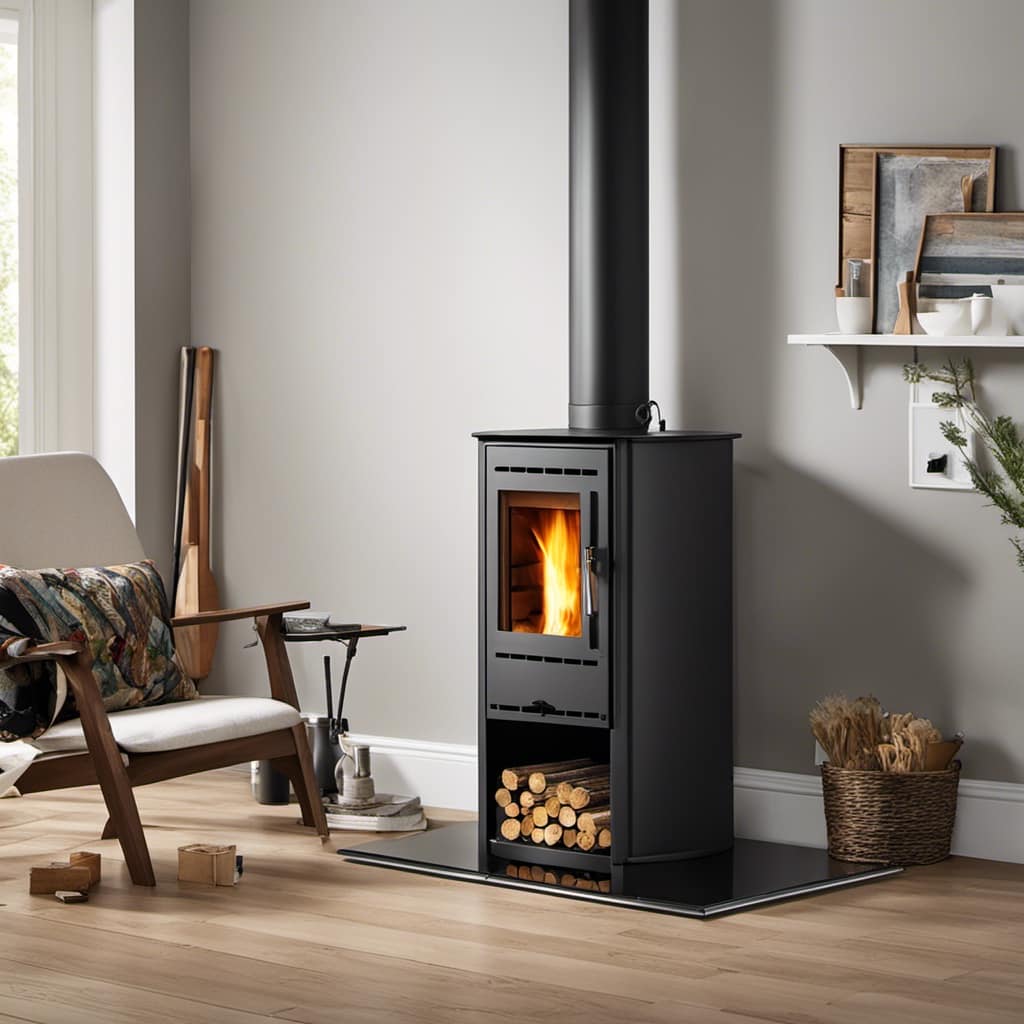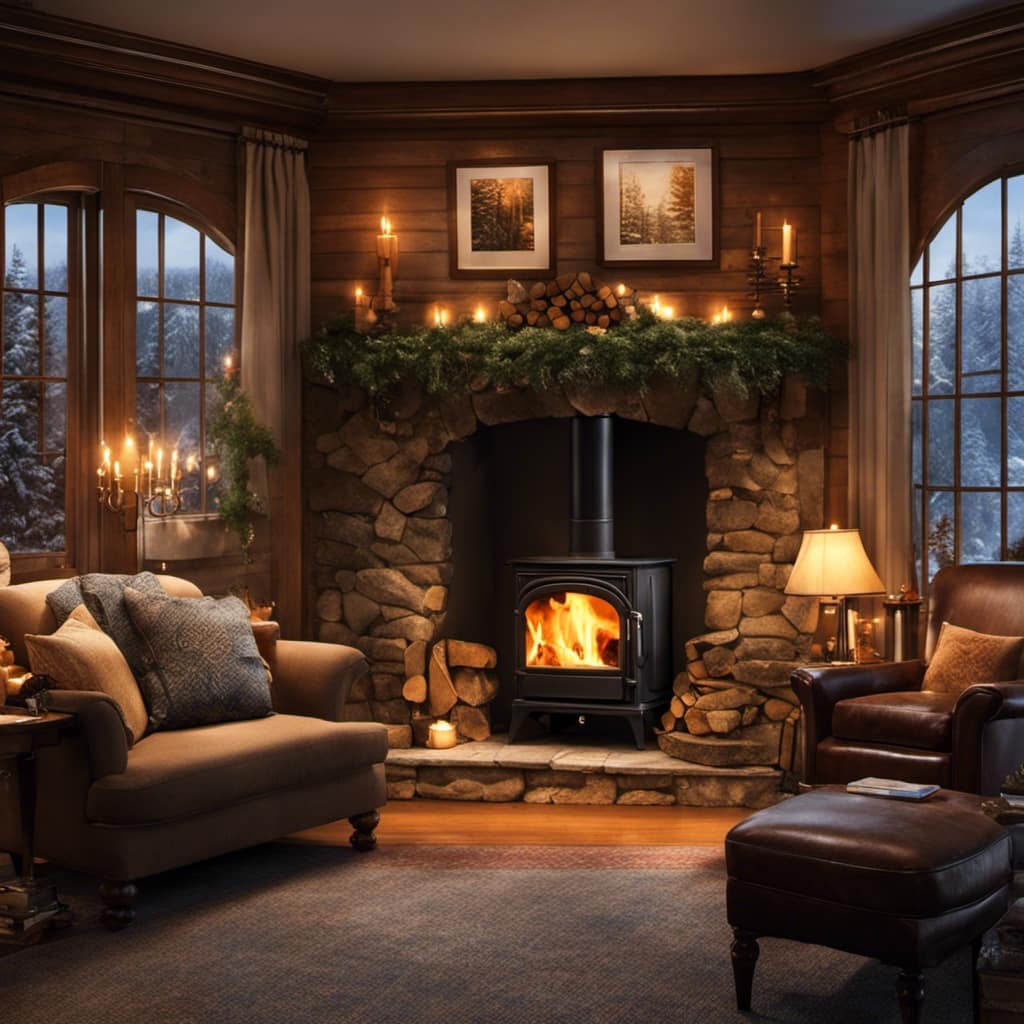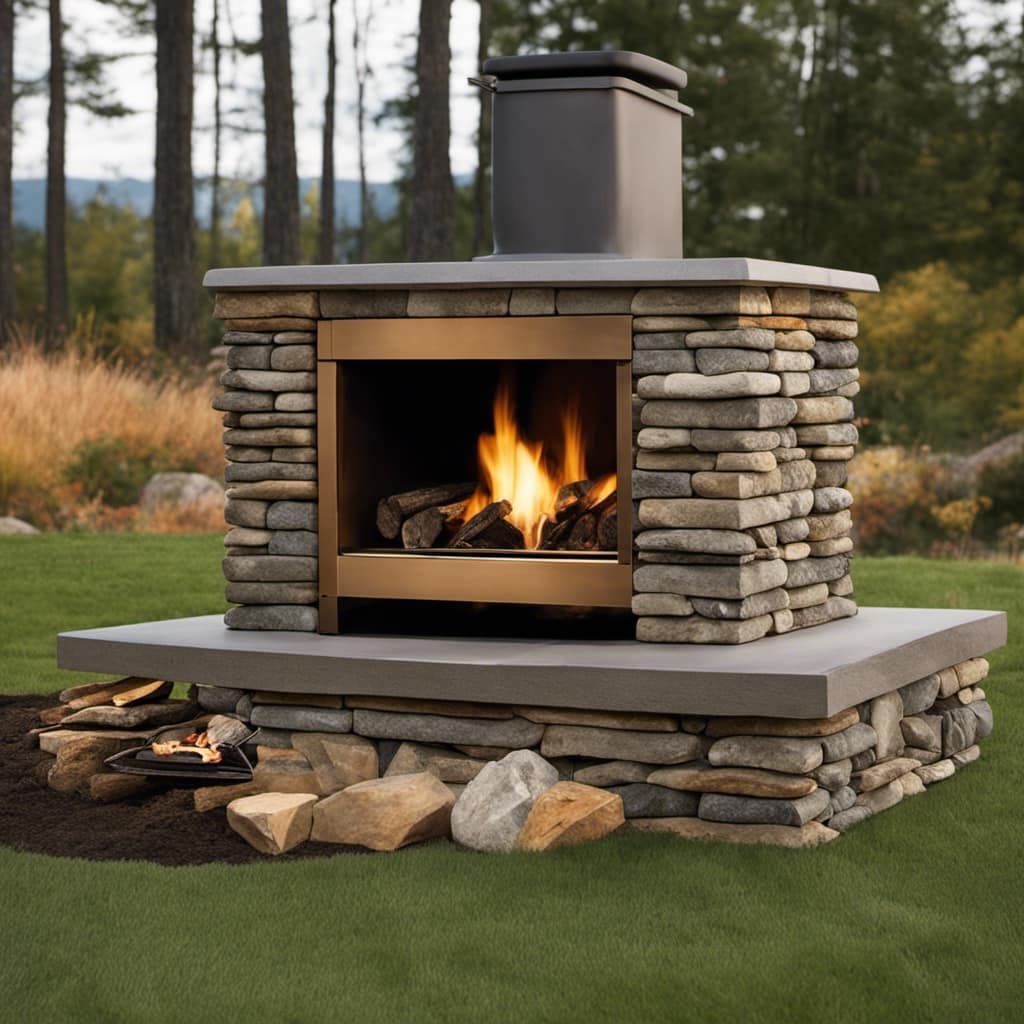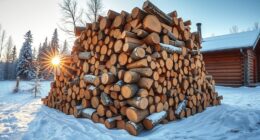
As a homeowner, I have frequently been fascinated by the workings of a wood stove equipped with a blower.
The combination seems like an ingenious way to distribute heat more efficiently.
In this article, we’ll delve into the inner workings of a wood stove with a blower, exploring the key components and understanding how the blower improves its efficiency.
Whether you’re looking to upgrade your current stove or troubleshoot any issues, this guide will provide you with the knowledge you need to make informed decisions.

Key Takeaways
- The blower helps circulate heat throughout the room.
- It enhances the performance of the wood stove.
- The blower distributes warm air evenly.
- It reduces energy consumption by distributing heat more evenly.
The Role of the Blower in a Wood Stove
I think the blower in a wood stove helps circulate the heat more efficiently throughout the room.
When it comes to wood stove blower installation, it’s important to understand the benefits of using a blower in a wood stove.
The blower, also known as a fan or circulator, plays a crucial role in enhancing the performance of a wood stove. It helps to distribute the warm air generated by the stove throughout the room, ensuring that every corner receives heat.
This is especially beneficial in larger spaces or rooms with poor airflow. By helping to circulate the heat, the blower ensures that the room is heated evenly, providing a comfortable and cozy environment.

Additionally, a wood stove with a blower can heat a larger area than one without, making it a more efficient and cost-effective heating option.
Understanding Heat Distribution in Wood Stove With Blower
Although the blower in a wood stove plays a crucial role in enhancing its performance, it’s important to understand the heat distribution process within the stove. The blower helps to circulate the heated air throughout the room, but without a clear understanding of how heat is transferred and how airflow dynamics work, the full potential of the wood stove can’t be realized.
Here are some key points to consider:
-
Conduction: Heat is transferred from the hot surface of the stove to the cooler surrounding materials, such as the walls and floor.

-
Convection: The heated air rises and creates a natural airflow, distributing the warmth throughout the room.
-
Radiation: The hot surfaces of the stove emit infrared radiation, which directly warms the objects and people in the vicinity.
-
Blower Placement: The strategic positioning of the blower ensures that the heated air is directed towards the desired areas.
-
Airflow Control: The blower speed and airflow direction can be adjusted to optimize heat distribution and maintain a comfortable temperature.

Understanding these heat transfer mechanisms and airflow dynamics is essential for effectively utilizing a wood stove with a blower to achieve maximum heating efficiency.
Key Components of a Wood Stove With Blower
While the blower and heat distribution are important considerations, understanding the key components of a wood stove with a blower is crucial for optimal performance.
One of the most important components is the combustion chamber, where the combustion process takes place. It’s designed to efficiently burn the wood, providing heat and minimizing emissions.
Another key component is the insulation, which is responsible for trapping and directing the heat towards the blower. Proper insulation ensures that the heat is effectively transferred to the surrounding area, maximizing the stove’s efficiency.

Additionally, a well-designed air intake system is crucial for maintaining proper air flow and combustion. It allows for the right amount of oxygen to be supplied to the fire, ensuring complete combustion and reducing the amount of smoke produced.
How Does the Blower Improve Efficiency in a Wood Stove
The blower in a wood stove improves efficiency by circulating the heat more evenly throughout the room. This is achieved by increasing airflow and improving heating distribution. Here are five ways the blower enhances the functionality of a wood stove:
-
Enhanced heat distribution: The blower helps to evenly distribute the heat generated by the wood stove, ensuring that every corner of the room receives warmth.
-
Increased heating efficiency: By improving the airflow, the blower allows the wood stove to generate and deliver heat more effectively, resulting in increased heating efficiency.

-
Faster heating: The blower helps to speed up the heating process by quickly circulating the warm air generated by the wood stove, reducing the amount of time it takes to reach the desired temperature.
-
Improved air quality: The blower not only circulates warm air but also helps to improve air quality by promoting better ventilation and reducing the buildup of smoke and fumes.
-
Reduced energy consumption: With the blower’s assistance in distributing heat more evenly, the wood stove can operate at lower temperatures while still maintaining a comfortable level of warmth, resulting in reduced energy consumption.
Maintaining and Troubleshooting a Wood Stove Blower
I have found three common issues when maintaining and troubleshooting my wood stove blower.

The first issue is blower noise, which can be quite bothersome. To troubleshoot this, I recommend checking the blower motor for any loose or damaged parts. Tightening or replacing them should help reduce the noise.
The second issue is reduced airflow, which can affect the efficiency of the wood stove. In this case, I suggest cleaning the blower motor to remove any dirt or debris that may be blocking the airflow. Regular maintenance and cleaning of the blower motor can prevent this issue from occurring.
Lastly, the blower motor may not turn on at all. This could be due to a faulty motor or a problem with the electrical connection. It’s important to check the motor’s wiring and connections to ensure they’re secure and functioning properly.
Frequently Asked Questions
Can a Wood Stove With a Blower Be Used Without the Blower Running?
Yes, a wood stove with a blower can be used without the blower running. However, using a wood stove blower has many benefits such as distributing heat more evenly and increasing the efficiency of the stove.

How Long Does the Blower Typically Run During a Heating Cycle?
The blower runtime during a heating cycle varies depending on factors such as stove size and heating needs. It is designed to maximize energy efficiency by distributing warm air throughout the room, reducing the need for additional heating sources.
What Is the Average Lifespan of a Wood Stove Blower?
The average lifespan of a wood stove blower depends on various factors, such as usage and maintenance. Regularly cleaning and lubricating the blower motor, checking for any worn-out parts, and ensuring proper ventilation can extend its lifespan.
Is It Possible to Retrofit a Blower Onto an Existing Wood Stove?
Yes, it is possible to retrofit a blower onto an existing wood stove. Retrofitting options vary depending on the model, but adding a blower can greatly improve heat distribution and efficiency.
Can the Blower Be Controlled With a Thermostat to Maintain a Specific Temperature?
Controlling the blower speed on a wood stove with a thermostat is possible and offers several advantages. It allows for precise temperature regulation, increased efficiency, and a more comfortable living environment.

Conclusion
In conclusion, a wood stove with a blower is an efficient and effective way to heat your home. The blower helps to distribute heat evenly throughout the space, improving the stove’s overall efficiency.
By understanding the key components and how they work together, you can maintain and troubleshoot your wood stove blower to ensure optimal performance.
So, kick back, relax, and enjoy the warmth and comfort that a wood stove with a blower can provide. It’s time to say goodbye to chilly nights and hello to cozy relaxation.
Growing up surrounded by the vast beauty of nature, Sierra was always drawn to the call of the wild. While others sought the comfort of the familiar, she ventured out, embracing the unpredictable and finding stories in the heartbeat of nature.
At the epicenter of every remarkable venture lies a dynamic team—a fusion of diverse talents, visions, and passions. The essence of Best Small Wood Stoves is crafted and refined by such a trio: Sierra, Logan, and Terra. Their collective expertise has transformed the platform into a leading authority on small wood stoves, radiating warmth and knowledge in equal measure.











